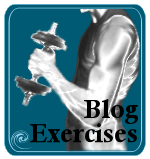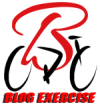 Training for educators using online learning management systems for high schools and college recommend creating a “Start Here” page to guide the student through the process. If the process is complicated, this makes sense. The question I wanted to know from trainers is why don’t they provide training upon entrance to the school so each instructor doesn’t have to start from scratch and explain how the system works for every class they teach? Let one well-formed tool on the site teach them how to use it. Let the teachers put their energy into developing the curriculum instead.
Training for educators using online learning management systems for high schools and college recommend creating a “Start Here” page to guide the student through the process. If the process is complicated, this makes sense. The question I wanted to know from trainers is why don’t they provide training upon entrance to the school so each instructor doesn’t have to start from scratch and explain how the system works for every class they teach? Let one well-formed tool on the site teach them how to use it. Let the teachers put their energy into developing the curriculum instead.
The same thing applies to websites and blogs.
My policy with clients and students is that if you have to explain how to use the site, there is something wrong with the site. This is a sweeping generalization, but in over twenty years of web design and development experience, I’ve yet to need a Start Here page except for the following conditions.
- If the site’s navigation is necessarily complicated.
- If there is a chronological order, a sequence to navigating the site and content consumption.
- If the site’s organization breaks with web standards.
- The site is a game site offering guidance or instruction on playing a game.
A site that complies with web standards, the standards defined by a generation of web page design, development, usage, and user expectations, should be easy for anyone to use. Natural. The key navigation should be in familiar spots such as within the header area, sidebar, and footer. Content should be structured in familiar ways, divided up by “static” content and posts or articles that are categorized and possibly tagged to increase navigation options.

A Start Here page may send a message to visitors. Over the years I’ve heard that a Start Here page makes the visitor feel like a child, like they need hand-holding, especially if the instructions duplicate other content, explains the standard operating procedure for website navigation, or doesn’t really help them. For those landing on sites that met the above criteria, Start Here pages were welcome and necessary.
Think about your own site. Do you have a Start Here page? Do you need one?
Alternatives to Start Here
If you need such instructions on your site, here are some alternative ideas to the Start Here page.
Site Map
A site map is the name of a site’s table of contents.
The table of contents for your site may be a listing of all the posts on your site as a list or in reading order. It may be structured, organized into categories or reading assignments, or just in date order.
There are many ways to create a site map. The most basic way is to create one manually.
- Create a Page titled “Site Map” or “Table of Contents.”
- Copy the links from your published content and organize it in a form that works for you, by category, date, or author.
- When you publish a new post, manually add the link to the list.
 If you are on WordPress.com, you may use the Archives Shortcode for WordPress.com to automatically update the site map list when you publishing new posts.
If you are on WordPress.com, you may use the Archives Shortcode for WordPress.com to automatically update the site map list when you publishing new posts.
- Create a Page titled “Site Map” or “Table of Contents.”
- Using the Archives Shortcode, structure it to meet you needs such as:
[archives][archives type=monthly][archives type=yearly]
If you have many posts, this technique creates an ugly list of your post archives in WordPress. Using the simple archives shortcode creates a long list of your posts. You may control them to be ascending or descending, but that’s about it.
If you choose daily, weekly, monthly, or yearly, your posts titles are not displayed. Only the date is displayed as a link. Click on the link to access the posts published within that time period.
The archives shortcode currently does not include a type for displaying posts grouped by category, a frequent request by WordPress users.
For maintaining control over the look and feel of your site map, consider adding them manually if you are on WordPress.com.
For those using the self-hosted version of WordPress, the Jetpack WordPress Plugin by WordPress.com offers the same archives shortcode features. There are a few site map WordPress Plugins available but most do the same thing as the Archives Shortcode, and few offer category structure to the post lists.
Add Instructions to the About Page
Since the About Page is the most important page on your site to welcome new visitors and introduce them to you and your site, why not add links there to guide them along the path.
Such instruction may be within the content itself with links to the information they need to read, or in a separate list titled “Your Guide” or “Table of Contents.”
You may feature the posts they should read in a specific order, or highlight links to the categories of the various topics you cover on your site such as:
Lorelle helps you learn more about blogging, WordPress, and WordPress.com.
Add Instructions to the Sidebar
If you need a specific list to guide the reader through your site, put the list in the sidebar.
This is most effective if the sidebar is visible on every pageview of your site.
You may use the WordPress Text Widget to manually create the list of posts or Pages to read in order.
Organically Link to Important Content
My personal favorite way to guide the reader through your site is through links. It’s an organic method and doesn’t clutter up your site and it serves new readers as well as long-time readers.
This article is an example. At any point where a link would help the reader learn more on the subject, on my site or another, I linked the words to the information. The reader may choose to follow the path or not, but the control is in their hands.
 Your blog exercise is two-fold today.
Your blog exercise is two-fold today.
- Ensure your site is easy to navigate and use and follows basic web standards for navigation and key content placement.
- If you have a Start Here guide on your site, re-evaluate its importance or redundancy.
In the old days, we had to hold the hand of web users to help them understand how the web worked. Today, everyone knows how. Don’t show them what they already know.
Make your site useful to your readers, old and new.
Blog about this, remember to include a hat tip link back to this post to create a trackback, or leave a properly formed link in the comments so participants can check out your blog exercise task.
You can find more Blog Exercises on Lorelle on WordPress. This is a year-long challenge to help you flex your blogging muscles.


 Subscribe by Email
Subscribe by Email






















7 Comments
I created my Table of Contents based on your instructions on this Blog Exercise: Organize Your Content.
The outcome: I see a full picture of my site at a quick glance. I see the direction of my site. It helps me make adjustments.
If I want to add or delete any content, I can do it more systematically. For example, if a category is unsuitable for the site, I can delete the whole category more ruthlessly. (P.S. Working with Lorelle involves ruthlessness.)
I’m establishing the habit of organically linking posts. I can see how it enhances the joy of reading, as I can click to read posts in the same series easily.
Thank you for your guidance.
I love your Table of Contents, Janet. I go through the list each time and think about how I would arrange things and realize that you’ve compartmentalized things well, as works for you and you alone. That’s magic at work! Well done.
You are doing amazing things. I’m so proud of you. Keep going! Ruthlessness is a learned skill. 😀
I have a Site Map page on my blog. But I like your suggestion of adding links to one’s content on the About page. I will do that and report back. Thanks!
I looked all over and couldn’t find a site map on your site, Kinna. Could you provide a link? I’d like to take a look at your example. Thanks!
Here is the link and I hope I did it right?
Sitemap
You used the Archive shortcode. Excellent. A bit cumbersome list, though, isn’t it? 😀
Please note that “sitemap” all one word is a hidden file for search engines. “Site map” as two words is what you have on your site. You might wish to change the title to reflect the difference. Another example of “I wish I was in charge of naming things.” SIGH.
Great work!
Thanks! I will edit the title soonest.
I’m so busy with work and life and find that I get horribly behind on your exercises. But I’m keeping track of the work that I do and those that I postpone to complete at a later time.
Anyway, I just want commend you again on this series and all work you put into it. It’s such a resource!